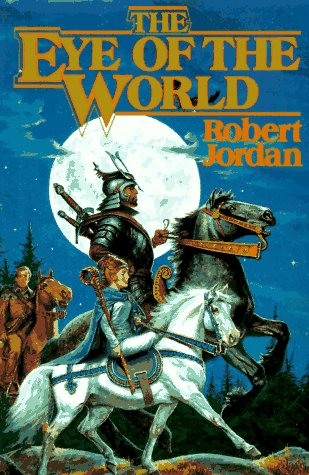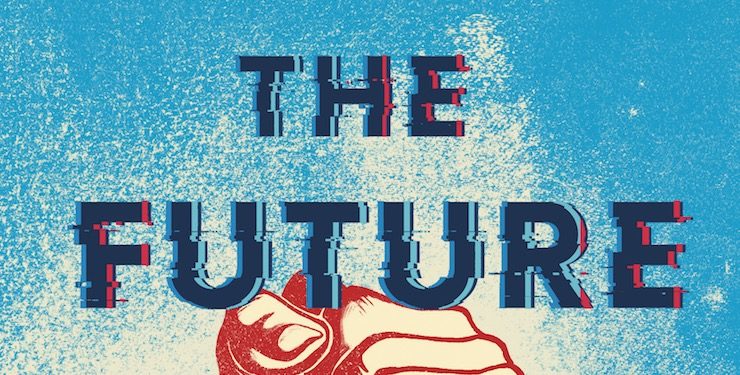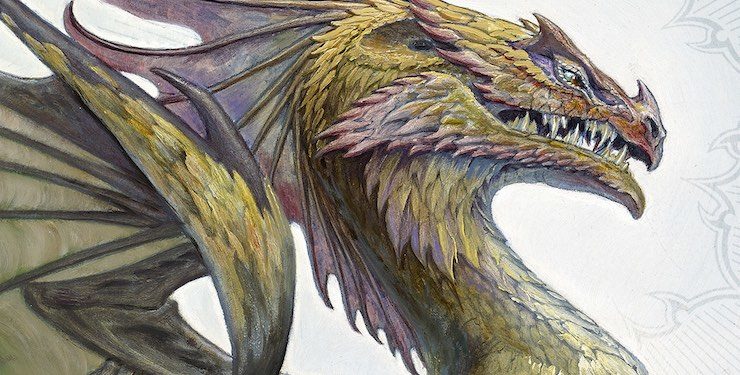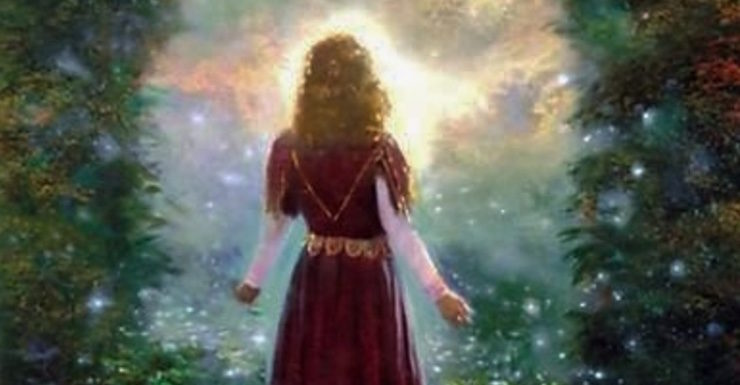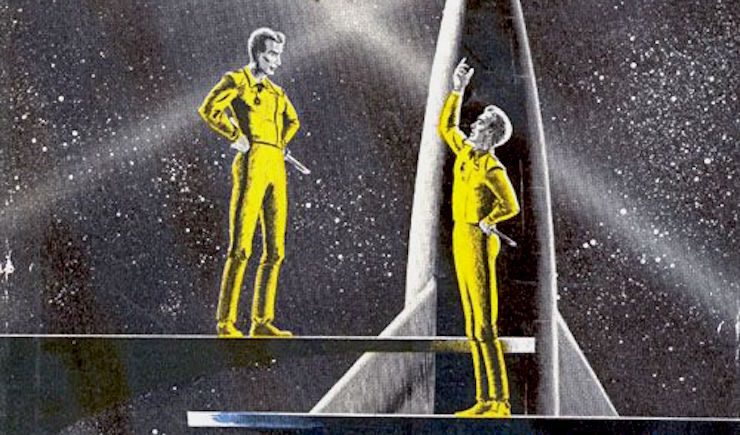Hi, all. Welcome to the first (official) post of the Wheel of Time Re-read. Today’s post will cover Chapters 1-9 of The Eye of the World, the first book in the Wheel of Time series.
A couple of notes before we get started:
- This and all other posts will be rife with spoilers for the entire Wheel of Time series, up to and including the most recent installment, Knife of Dreams. In other words, in the unlikely case that you are reading the series for the first time, you really, really want to wait till you’ve finished them all before reading these posts.
- Corollararily (…what?), a general foreknowledge of what’s going to happen is assumed. I’ll try to explain things that may not be obvious to the casual reader, but for the most part I’m working under the assumption that you guys pretty much know what the deal is, especially in the earlier books.
- I will try for the most part to avoid fannish jargon and acronyms, especially since I get the feeling many of them do not translate across forums, but old habits die hard, so if there is anything you don’t get, feel free to go “Buh?” in the comments and I will Esplain.
So, if you’ve got all that, we can get going. Please return your seatbacks and trays to their full upright and locked position, keep your hands and arms inside the carpet, and proceed onward through the jump!
Prologue: Dragonmount
What Happens
A crazed Lews Therin Telamon wanders through the wreckage of his palace, not seeing the corpses of his wife and children. A man named Elan Morin Tedronai appears to kill him, but is angered to realize that Lews Therin is too insane to recognize him, and Heals him (painfully) using the Dark One’s power. Returned to sanity, Lews Therin sees the dead body of his wife Ilyena and begins sobbing uncontrollably. Tedronai offers to bring her back from the dead if Lews Therin will serve the Dark One, and Lews Therin replies that he will kill Tedronai for Ilyena’s death. Tedronai then reminds him that it was he, Lews Therin, who had killed Ilyena and all his kin, not Tedronai, after Lews Therin’s attack on the Dark One allowed the counterstroke which sent the Hundred Companions insane, and now the Companions are all tearing the world apart. The remembering of this sends Lews Therin into a fit of pain and despair. Using the One Power, he Travels to a remote area near a river and, calling on the Light to forgive him, calls down enough of the One Power to immolate himself completely and create a mountain out of flat land.
Commentary
Best Line:
“Ten years! You pitiful fool! This war has not lasted ten years, but since the beginning of time. You and I have fought a thousand battles with the turning of the Wheel, a thousand times a thousand, and we will fight until time dies and the Shadow is triumphant!”
I think this is what the kids call “Starting off with a bang.”
This Prologue, unlike many of the later ones, does just what a prologue is supposed to do: provides just enough information and allusions to draw the new reader in, and sets the tone for the entire book/series to follow. (The later prologues tend to be more of a “wrap-up/progress the storylines we won’t be coming back to in this book” thing.)
Although, I suppose in a way this prologue is similar, in the sense that this is the only time in the series to date that we see anything firsthand from the Age of Legends. In that way this Prologue is really unique unto itself, compared to everything that follows.
One thing I tend to keep forgetting about the Wheel of Time between rereads is that whatever his flaws as a writer, Jordan had a true gift for vivid imagery, and for writing prose that should sound purple and overwrought, but doesn’t. Go reread the very first paragraph, which is nothing but a big chunk of description, if you don’t believe me.
(And you know, we never did find out what the Nine Rods of Dominion were, did we?)
Chapter 1: An Empty Road
What Happens
A Famous Introductory Wind brings us to Rand al’Thor and his father Tam, on their way into Emond’s Field for the festival of Bel Tine. They are wary, on guard against the wolves and other predators which have lately been plaguing the Two Rivers. Rand sees a strange black-cloaked man on the road behind them, but when he calls Tam’s attention to this, the rider has disappeared. Rand then realizes that the wind had not moved the rider’s cloak at all. He tries to convince himself that he had imagined it, but without success. They continue on into town, where the various townsfolk are uneasy about the bad weather but determined to have their festival anyway. Rand meets up with his friend Mat Cauthon, planning mischief as usual, and discovers that Mat has also seen the black-cloaked rider, and that it scared him. The Mayor, Bran al’Vere, reveals that a gleeman is in town and that fireworks are planned, and Rand and Mat start unloading Tam’s wagon.
Commentary
The Eye of the World (henceforth, “TEOTW”) tries to set up confusion throughout as to whether Rand, Mat, or Perrin is the Chosen One that the Shadow is after. It’s unclear to me whether this is meant to be an ambiguity solely for the characters, or whether the reader is supposed to be uncertain as well. I hope it is the former, because even without the benefit of hindsight, as far as I am concerned the fact that Rand is the very first person we meet in the first chapter of the first book (of the series proper), well, it kind of takes the suspense out of that one.
This chapter accomplishes two things: to set an ominous, foreboding tone with the winter and the wolves and all, and also to establish the character of the Two Rivers inhabitants—simple, somewhat backward, but most importantly tough, stubborn folk.
Though slight, there is a shift in tone from the prologue; while it is still very much on point with the imagery and high-flown vocabulary, the prose is nevertheless a little more relaxed, a little more contemporary in style. Not too much, but enough to make my Lord of the Rings acid flashback no more than a mild occasional seizure.
I find it interesting that Mat’s character is so immediately identifiable, as are all the other Two Rivers characters we meet here including Tam, while Rand’s personality remains largely undefined. Basically all I got out of this chapter regarding Rand is that he is tall, young, and more responsible than Mat (which isn’t saying much). This might be over-analyzing, especially since Rand does produce particular character quirks later on down the line, but I am reminded of an observation a friend made a long time ago (hi, Thor!) about how so many of these protagonist hero types’ personalities tend toward the bland precisely because that makes it easier for the reader to map him/herself onto the hero as a proxy. Wish fulfillment and alla that.
True here? Not sure. Talk amongst yourselves.
Chapter 2: Strangers
What Happens
Rand and Mat finish unloading the cart and meet up with Ewin Finnegar, who tells them that there are strangers in the village: a swordsman and a highborn lady, or so they presume. They leave the inn, and Rand feels like he is being watched. He sees a raven on the roof of the inn, and he and Mat try to scare it off with rocks. The raven dodges the rocks with ease, but flies away when Moiraine appears. The boys stammer and stumble, and Moiraine smiles and gives them coins, asking them if they will help her out while she is in town. Rand asks her why she is in town, and she cryptically replies that she is a student of history. They see Lan also, and Ewin opines that he’s a Warder, though Rand and Mat scoff at this. After she leaves, Rand and Mat notice that the coins Moiraine gave them are different from the one she gave Ewin. Then they are distracted, because the peddler has arrived in town.
Commentary
Best Line:
“As the Wheel of Time turns,” Moiraine said, half to herself and with a distant look in her eyes, “places wear many names. Men wear many names, many faces. Different faces, but always the same man. Yet no one knows the Pattern the Great Wheel weaves, or even the Pattern of an Age. We can only watch, and study, and hope.”
There’s not a lot to say about this chapter, though it includes the notable introduction of Lan and Moiraine; it’s setup, mostly.
Though I will say that the idea of a bird sitting around and watching you is still a creepy one, in my mind. I mean, a big giant Trolloc coming at you is hardly my idea of fun, but at least it’s fairly obvious. How are you supposed to keep an eye out for birds, though? Or worse yet, rats?
Kind of in the same way I find the concept of biological terrorism (which, I note, is also employed in the Wheel of Time, especially later on) to be scarier than more conventional (for lack of a better term) methods. Oh, sure, just avoid the air and you’ll be fine…
(Actually now that I think about it, the entire concept of tainted saidin could be classified as biological terrorism. Think about it.)
Chapter 3: The Peddler
What Happens
Most of the village turns out to see the peddler, Padan Fain, as he rolls into town. In the crowd, Rand and Mat run into their friend Perrin Aybara, the blacksmith’s apprentice. Fain informs the villagers that the weather problems they’ve been having extend far beyond the boundaries of the Two Rivers, and that there is war in Ghealdan. A man there has raised the standard of the Dragon, and unlike other recent false Dragons, Fain tells them, this one can channel; a party of Aes Sedai have been sent from Tar Valon to deal with him. The crowd greets this news with great dismay, and they shout and argue for a bit over whether this man could be the real Dragon Reborn, until Bran cuts them off by taking Fain inside the inn to consult with the Village Council. Rand, Mat and Perrin discuss the conflicting legends concerning the Dragon and Aes Sedai until Nynaeve al’Meara, the village Wisdom, and Egwene al’Vere, Bran’s daughter, interrupt them. Nynaeve berates them for foolish superstitious talk, and they tell her about Fain’s news. She leaves to join the Council and Fain in the inn, and Egwene reveals to Rand that she has been given permission to braid her hair (meaning that she is of marriageable age, which freaks Rand out), and that she is apprenticed to Nynaeve and intends to leave the village to practice elsewhere when her apprenticeship is done, which upsets Rand. She gets angry at him in turn, and moves off, whereupon Mat tells Rand that Perrin has also seen the black-cloaked rider and been given a coin by Moiraine. Egwene asks what they are talking about, but they are interrupted when the gleeman exits the inn.
Commentary
First mention of a woman crossing her arms under her breasts! Yay!
And, right on the heels of that:
At the best of times [Rand] was never very nimble with his tongue when talking to any of the village girls, not like Perrin…
Oy. Which will have to do as the best line in this chapter, I guess, since there really isn’t a better one.
Again, this chapter is mainly notable for introducing the rest of the to-be-major players: Egwene, Nynaeve, Perrin, and (to a lesser extent) Padan Fain. The only other really interesting thing to note here is how the proto-Supergirls are already annoying me, which does not bode well for the next, um, 9,000 pages. Yikes.
That being said: I remember when reading this the first time around that I conceived an instant hatred of Nynaeve, which was not to let up for five books. (But then, believe it or not, she became one of my favorite characters in the series—and she became that during the whole Valan Luca traveling circus madness in Fires of Heaven. No, I’m not insane. Well, maybe I am, but I’ll explain my reasoning on that when we get there and you can judge for yourself.)
Regardless, at first I hated her, and was so pissed when it became obvious that she was going to be one of the central characters of the series. I don’t recall, on the other hand, having any particular animus against Egwene in TEOTW, and in fact I think she was my favorite female character in the first few books (aside from Min, who is made of pure undiluted awesome compared to most of the female characters in the series).
However, this time around I’m finding, rather to my surprise, that the opposite holds; I’m having a great deal more sympathy for Nynaeve, and wanting to tell Egwene to shut up and lay off Rand, the little pipsqueak. I suspect that my empathy for Nynaeve’s situation may be due to the fact that, unlike the first time I read this, I’m not in college anymore, and thus have had far too much real-life experience dealing with the Cenn Buies of the world, who see no incongruence with deriding or dismissing the competence of someone because of their youth or rank (or gender), while simultaneously being pathologically incapable of finding their own ass with a roadmap, a flashlight and a native guide.
I don’t know, I guess I have more sympathy now for having to put up a hard front while secretly wondering if maybe all the naysayers are right, and you really are too young/inexperienced/short/tone-deaf/whatever.
Or, you know, I could be projecting. MAYBE.
Chapter 4: The Gleeman
What Happens
The gleeman, Thom Merrilin, stomps out of the inn, very put out by the way he’s been treated since arriving in Emond’s Field. Rand and the others all gape at him, but manage to explain about the Council meeting. Thom dismisses Fain’s news as old hat, recruits Egwene to be his assistant, and gives them a sneak preview of his talents. Everyone calls out requests for old stories, but Thom breaks off abruptly when he sees Moiraine. He greets her cautiously and they fence verbally for a moment before she glides off; he does not appear to take her explanation of why she’s in the village at face value. The Council re-emerges from the inn, and Thom ducks back inside. After Nynaeve argues with Bran and storms off, Tam tells Rand et al that there is nothing to worry about re: the false Dragon in Ghealdan, and announces to Rand’s surprise that he and Rand are going back to their farm tonight, rather than staying in town for Winternight. Rand, Mat and Perrin debate whether to tell anyone else about the black-cloaked rider, and finally decide that no one would believe them anyway. Rand joins his father to go home, where he is surprised to discover that his father does believe him about the rider after all, but doesn’t think there’s anything to do about it until later.
Commentary
Best Line:
“Battles interest me,” Mat said.
Ha!
Still in setup/buildup mode, where we introduce the last of the above-the-line talent for a while (i.e. Thom Merrilin) and get all our ducks in a row for when Shit Starts To Happen, which is in the next chapter.
I don’t have space to get into all the allusions and real-world references in this chapter here (there is more than enough of that kind of analysis out there, including the WOTFAQ), so we will move on, with a brief pause to toss kudos to Jordan for managing to cram an amazing amount of world building/exposition-type material into a (relatively) short chunk of text, and managing to do it in a way that only once or twice comes across as info-dumpy or clunky (I’m thinking specifically here of the villagers’ panicky Bullet List Of Why Dragons Are Super Bad, For Reals in Chapter 3).
In other news, I like run-on sentences. Let’s move on, shall we?
Chapter 5: Winternight
What Happens
Rand and Tam get back to their farm, do chores and such, and get ready to settle in for the night. Rand is surprised when Tam locks the doors, and then is even more shocked when Tam pulls out a sword Rand didn’t know his father had, with herons embossed on the hilt, blade and scabbard. As they are about to eat, Trollocs bust the door down and attack Tam, who kills two of them and yells for Rand to get out the back. Rand climbs out of a window, shouts a warning to Tam that they’re coming in the back as well, and runs to hide in the woods near the house. Tam crashes through another window and Rand calls to him again, but Tam runs in another direction, trying to draw them off from his son. They find each other again once things have gone quiet, and Rand realizes Tam is wounded. He takes his father’s sword and sneaks back into the house to get supplies for the trip back to the village. One of the apparently-dead Trollocs on the floor turns out to have been playing possum, and tries to trick Rand into putting down his sword, saying that “Myrddraal” wants to talk to Rand. Then he lunges for Rand, and Rand kills him with the sword, mainly through luck. Rand gathers supplies from the house and barn quickly, and gets back to his father to see that Tam’s condition has worsened.
Commentary
Ah, remember when Trollocs were scary and formidable, instead of random cannon fodder?
Also, I could be wrong but I think this is the only time we see a Trolloc (a) have a name, and (b) speak in their own language:
“Vlja daeg roghda!” The snarl became a toothy smile. “Put sword down. Narg no hurt. Myrddraal want talk you.”
Chapter 6: The Westwood
What Happens
Rand cleans and binds his father’s wound and puts together a makeshift litter to tow him to Emond’s Field. Tam feverishly begins talking to Kari, his dead wife. Rand begins the arduous journey to the village, staying off the road for fear of the Trollocs coming back. Tam begins talking about the Aiel War (though Rand doesn’t know what he’s referring to yet). The Myrddraal appears on the road and seems to almost sense where Rand and Tam are hidden in the woods, but finally moves on. Rand starts out again for the village as Tam continues to ramble about the Aiel War, until Tam talks about being on a mountain and hearing a baby cry in the snow:
“I couldn’t just leave a child… no children of our own… always knew you wanted children. I knew you’d take it to your heart, Kari. Yes, lass. Rand is a good name. A good name.”
Commentary
Wherein Rand makes the discovery that characters in these kinds of stories usually do: that having an adventure isn’t nearly as fun as reading about them.
Really strong LOTR flavor here, what with Rand hiding from the Nazgul Myrddraal while trying to get to Bree Emond’s Field. Not that I’m complaining; I remember reading this chapter for the first time with my heart in my throat. Excellent tension. If it ain’t broke…
And of course, the very Campbellian quote above, when Rand gets his first hint that He Might Be More Than He Seems.
And… yeah, it’s still pretty awesome.
Chapter 7: Out of the Woods
What Happens
Dazed by Tam’s revelation, Rand travels the rest of the night before finally reaching Emond’s Field at dawn, only to find that it too has been attacked and partially burned. Egwene brings Nynaeve to see Tam, but Nynaeve tells Rand that there is nothing she can do for him. Unwilling to accept that, Rand tows the litter to the inn, where he sees that someone has carved the Dragon’s Fang on its door. Bran takes Tam up to a bed in the inn, and after finding out that Nynaeve had said she could do nothing for him, tells Rand that Moiraine is an Aes Sedai, and might be able to help. He warns Rand, though, to be wary of accepting gifts from Aes Sedai. Rand finds Moiraine and Lan and begs her to save his father, no matter what the cost. Lan is against the idea, but Moiraine overrules him, and agrees to come to the inn.
Commentary
More first mentions in this chapter: the Dragon’s Fang, angreal, and Lan’s talk of Trolloc tribes (an idea which Jordan seems to have abandoned very early on, as we never see them mentioned again after TEOTW that I can recall. Not to mention Gandalf Moiraine’s staff, which didn’t last much longer).
We also have here for the first time the defining characteristic of the Aes Sedai M.O.:
Help from an Aes Sedai was sometimes worse than no help at all, so the stories said, like poison in a pie, and their gifts always had a hook in them, like fishbait.
This quote struck me, because out of all the lore we get concerning Aes Sedai in the early chapters of TEOTW, this is one of the few that is actually true. Well, mostly. Which leads me to a thought I’ve had before but don’t know that I ever articulated:
Part of what makes the world building of the Wheel of Time work so well is its feel of authenticity in the stories told within it. And what I mean by that is how the various legends and references are rarely if ever completely true, or completely false, but are usually both. And I think that resonates. Anyone who’s had experience with media bias, or been the target of gossip, or been told FOAF stories, or played Telephone at a party, or ever set foot inside a high school—i.e. everyone—that ambiguity dovetails perfectly with our experience of the way stories work in the real world.
Stories, especially orally told stories, are adulterated things; the very act of telling them changes them from what they were previously. The older they are and the more times they’re told, the more altered (or decayed) they become. Which is more or less the core notion upon which the Wheel of Time series is built (combined with the notion of circular time, so that all stories eventually come back around to their origins again).
Jordan is hardly the only author to play with this characteristic of stories, of course, but he is fairly unique in how fundamental it is to his fantasy world. Most fantasy series of this type (that I’ve read, anyway) tend to follow the All Myths Are True doctrine, with very few exceptions. Certainly that makes things a lot easier for the author.
In fact, I’m no expert but I don’t even recall Tolkien playing much with the mutability of legends; his “legends” are pretty much historical fact within the context of Middle Earth. If I’m wrong on that I’d love to hear about it.
Chapter 8: A Place of Safety
What Happens
Moiraine, Lan, and Rand arrive at the inn and go to Tam; Thom leaves the room quickly as soon as they enter. While Moiraine attempts to Heal Tam, Lan asks Rand about the heron-marked blade he’s carrying, and remarks that the heron is the mark of a master swordsman. Rand asks if it would have helped them to know about the black-cloaked rider, and Moiraine says not much, and that she should have been warned by the behavior of the raven on the roof of the inn the day before. She takes out her angreal in order to Heal Tam fully, and Lan explains to Rand about Myrddraal. Once Tam is Healed, Moiraine informs Rand that he and Mat and Perrin would have to leave the Two Rivers; it was only the three of them the Trollocs were after:
“In one of you,” Moiraine said, “Or all three, there is something the Dark One fears.”
Rand is reluctant to believe this, but Moiraine convinces him it is not worth risking Emond’s Field further in case she is right, and at last Rand agrees to go with her to Tar Valon. After Moiraine and Lan leave, Rand confirms her story with Bran about which houses were attacked, and then sits down next to Tam’s sickbed, where he quickly falls asleep.
Commentary
Rand can already sense a woman channeling here (though of course he doesn’t know that’s what he’s doing). I don’t know that I noticed that before.
Also, this bit is interesting:
[Moiraine’s] tongue clicked angrily. “I was overconfident to the point of arrogance, sure that the Dark One’s touch could not have spread so far.”
[…]
The Dark One was always there—[Rand] knew that—but if you tried to walk in the Light, tried to live a good life, and did not name him, he could not harm you. That was what everyone believed… But Moiraine seemed to be saying…
What you’ve got here is a conflict between worldviews on the nature of good and evil: Rand’s more or less Christian belief that evil can only harm you if you succumb to temptation, versus the more pagan belief that evil is random, and strikes without consideration of the goodness or badness of the people involved. In other words, if Zeus decides to turn himself into a duck or whatever and swoop down and have his way with that shepherd over there, it really doesn’t have much to do with whether the shepherd’s a nice kid or not.
Naturally, the viewpoint that turns out to be true in Randland is the one that sucks the most.
Chapter 9: Tellings of the Wheel
What Happens
Rand dreams of a fiery mountain in a barren land, and a voice that whispers “serve me.” He defies the voice, calling the Dark One by name, and abruptly finds himself outside a beautiful city (Tar Valon, though Rand does not necessarily recognize it yet), being urged on toward the tower at the center of the city by the smiling inhabitants. Rand resists going straight there at first, but every direction he turns, the tower is somehow still in front of him, and finally he gives up and heads toward it. The people all sing and throw flowers at his feet, and he walks into the tower, only to find a Myrddraal waiting for him. Rand bolts awake. Soon after, Tam wakes up too, and Rand tells him what happened and that he’s leaving. To his surprise, Tam agrees that he should go, but warns him to be careful of Moiraine and Lan, and to keep the sword. Lan comes in and hustles Rand outside, where a crowd of villagers is confronting Moiraine, demanding that she leave Emond’s Field. Moiraine makes her staff burst into flame, effectively shutting them up, and tells them the story of Manetheren, shaming them for failing to live up to their ancestral heritage. The villagers shuffle off, and Lan drags Rand and Mat off to the inn stable.
Commentary
Lots of excellent visual imagery here, both in the dream sequence and in the telling of the fall of Manetheren. I liked this passage especially:
Steamy mists covered the canyon floor, their thick gray surface rolling in grim waves, rolling and breaking against the cliff beneath him, but more slowly than any ocean wave had ever moved. Patches of fog glowed red for an instant as if great fires flared beneath, then died.
The dream is nicely ambiguous (if you haven’t already read the whole series, anyway), but I didn’t remember the implication that going to Tar Valon was a trap. It’s interesting to note that as of Knife of Dreams, Rand has still never once been anywhere near the city.
The fall of Manetheren—still a damn good story. One of the best parts of doing a reread is coming back to the bits that I kind of forgot about, and then going “damn, that’s a good bit.” Nothing like a doomed last stand, I always say.
And we’ll stop here for now. Part 2 of The Eye of the World re-read (in which we will cover Chapters 10-18) coming this Friday, same bat time, same bat channel. Stay tuned!










